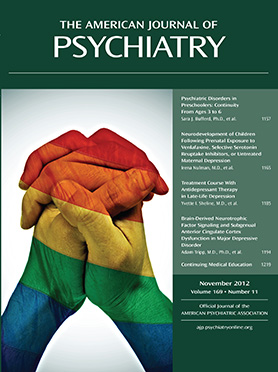The American Psychiatric Publishing Textbook of Suicide Assessment and Management, 2nd Edition
Every clinician will most likely encounter a patient with suicidal ideation and suicidal behavior. Starting with the foreword, this book attends to the full person, as well as to the complexity of suicide risk. It serves as a comprehensive resource for assessing and managing patients with suicidal ideation and behavior and coping with suicide. The revised structure of the book offers many pathways to obtaining helpful guidance. The authors are well-grounded in the area of suicide. The provision of case examples throughout this edition is indispensable, with key clinical concepts provided at the end of every chapter. The comprehensive references and indexing allow readers to expand their knowledge or quickly find what they need.
Readers will come away from this book with the understanding that most people who die by suicide have a diagnosable and potentially treatable mental disorder accompanied by a confluence of risk factors. They will also understand that each individual is unique and must be assessed frequently and comprehensively, taking into account a host of risk factors, some of which are amenable to change and some of which are not. Some risk factors, such as family history of suicide, childhood abuse, and substance use disorders, cut across diagnoses, while other factors are specific to clinical syndromes. Setting and population also play roles in assessment and management.
This is not a book that one reads from cover to cover, but rather it is a compendium of information that can be perused or referred to over time, especially when needed. The format of the book provides many entry points; whether seeking information about a specific diagnostic group, a particular setting, or a specialized circumstance, the reader will come away with an approach to considering the patient in terms of suicidal ideation and behavior. The reader will also find information regarding the effect of suicide on the clinician, legally as well as emotionally.
In part I, the authors provide the clinician with a rationale for considering suicide risk and assessing every patient at the outset of treatment for suicidal ideation and attempts, both past and present. An array of approaches for assessment is presented. The clinician cannot help but find a method for assessing suicide risk, regardless of theoretical orientation.
Part II is organized by major psychiatric diagnostic categories. A drawback to this approach is that the issue of comorbidity, a frequent occurrence, cannot be addressed directly. The authors are experienced with treatment of individuals with the diagnosis under consideration as well as with issues unique to suicide and suicide risk. This experience is imparted to the reader and provides a depth of understanding that cannot be found elsewhere.
Part III provides a well-rounded discussion of treatment when suicidal ideation and behavior are involved. Psychopharmacological, cognitive, and psychodynamic approaches to assessment and management are all presented, with clinical examples and helpful tools. The issue of split treatment is deftly addressed with respect to the importance of communication, collaboration, and shared responsibility with patients. The examples crystalize how the clinician can integrate the assessment and management of suicidal ideation and behavior in treatment while maintaining a therapeutic alliance and cohesive treatment.
Every setting establishes specific parameters for the assessment and management of suicidal ideation and behavior, and part IV includes chapters on the most typical psychiatric settings. Issues such as physical safety, constant observation, and coping with uncertainty are covered. A review of managing suicide risk in residential and day treatment settings would have been a useful addition, since many people with chronic suicide risk are treated in these venues.
Part V includes a chapter titled “Special Populations,” which actually involves consideration of special settings. Chapter 20 primarily provides reviews of issues related to college students, which is appropriate because younger children are at reduced risk. However, some attention to working with younger children would have been useful. Overall, this section covers higher-risk populations, such as the elderly, the incarcerated, and military personnel. With each group, setting and culture are as important as the individual's issues.
Parts VI and VII are not clinically based. Although not directly related to clinical care, these sections offer interesting information.
Finally, the book approaches death by suicide and its effect on the clinician and family. It is here where loss by suicide is addressed head-on. Questions are tackled about the survivors, including the clinician, family, and friends. In cases in which a suicide occurs, it is difficult to know how to manage feelings and what to do regarding funerals and the survivors. Any clinician will benefit from this section, not just in the face of suicide but also in working with survivors of a loss by suicide.
This is a textbook in which the reader can learn about the complexity of the assessment and management of suicidal ideation, suicide attempts, and suicide. Assessing and managing suicide risk is stressful but not to be avoided. The Textbook of Suicide Assessment and Management is a reliable resource and support for clinicians.



